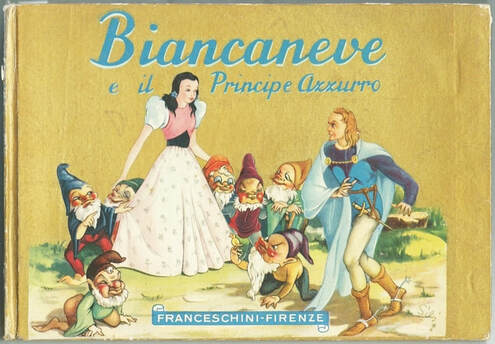|
Have you ever wondered how you say "Prince Charming" in other languages? In several Romance languages, the term translates to "The Blue Prince" and is a common term for the perfect man. There's the "príncipe azul" (Spanish), "príncep blau" (Catalan), "principe azzurro" (Italian), and "prince bleu" (French). In all cases, the idea translates to what an English-speaker would call a Prince Charming or a knight in shining armor. Variants of this term go back at least to the 18th century.
Zadig ou la Destinée by Voltaire (1747) features a joust in which the hero Zadig wears white armor and defeats a man in blue armor, who is referred to briefly as "le prince bleu." This is only a passing line, but one wonders if it was a reference to a well-known phrase. Sur la scène et dans la salle. Miroir des théâtres de Paris (1854) describes a play featuring the role of "prince Azur" (p. 46). The Revue de France in 1879 mentions "le prince bleu des contes de fées." Victor Hugo's Les quatre vents de l'esprit (1881) has "le prince Azur" (p. 252). "Le prince Bleu" and "roi Charmant" (King Charming) both get a mention in Jules Claretie's Noris: mœurs du jour (1883, p. 37). In Contes populaires de Basse-Bretagne by Francois-Marie Luzel (1887), a character in the tale of "Le Prix des Belles Pommes" is called Le Prince-Bleu. He is the hero's strongest rival for the princess's hand, but receives a dismal fate while the despised hero triumphs. By 1893, La Union literaria defines "Príncipe Azul" as a character "de una mitologia fastidiosa ser inverosimil y aereo" (of an annoying mythology, improbable and airy). This isn't even close to an exhaustive list. Oddly enough, in quite a few of these examples, the blue prince gets set up as the classic knight in shining armor, but is either disparaged as a foolish idea by the narrator or given a comeuppance by the story. So why "blue"? Apparently there has been some speculation that King Vittorio Emanuele III of Italy was the original for the Blue Prince. Blue was the traditional color of his family, the House of Savoy. An article by Paolo Zollo was titled "Che il Principe Azzurro sia stato Vittorio Emanuele?" (Was the Blue Prince Vittorio Emanuele?) in Messaggero veneto (1982). A connection had been drawn previously by Giovanni Artieri, who described Vittorio's wife Elena as "Cenerentola" (Cinderella) and Vittorio as "un Principe Azzurro, azzurro Savoja" - "a Blue Prince, Savoyan blue." (Il tempo della Regina, 1950, p.52). Unfortunately for this theory, Vittorio and his wedding (which seems to have inspired the comparison) are a bit late. One possibility is that "the blue prince" comes from the idea of blue-blooded royals. Blue-blooded has long been a way to refer to the nobility. The nickname is derived from the Spanish "sangre azul" dating at least to 1778. It was theoretically inspired by the nobility, with their fair skin that showed off blue veins. Or the prince might literally be wearing blue. Blue pigment was expensive in the past and often marked the clothing of the nobility. The Oxford English Dictionary lists a number of uses of the term "royal blue," including an advertisement in the 1782 Morning Herald & Daily Advertiser: "Among other colours are the royal blue, the green, pink, the Emperor's eye, straw, &c." Similarly, there is a 1787 reference to a sky "of the deepest royal blue." There are a multitude of possible explanations for the "blue prince" term. According to this forum thread, one Hungarian term for a Prince Charming is "kék szemű herceg," or the blue-eyed prince. So depending on how you look at it, the term could be a reference to blue blood, blue clothing, blue eyes, or something else entirely. Whichever the case, those three things all accentuate the relevant traits of the archetypal fairytale prince. He's royal, rich, and good-looking. All the same, it seems writers had tired of this ideal even in the 19th century, disparaging the character as unrealistic or showing a less promising hero who defeats him. Text copyright © Writing in Margins, All Rights Reserved
0 Comments
Leave a Reply. |
About
Researching folktales and fairies, with a focus on common tale types. Archives
April 2024
Categories
All
|
Writing in Margins

 RSS Feed
RSS Feed
